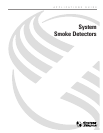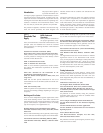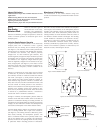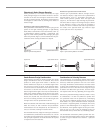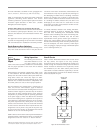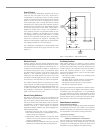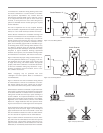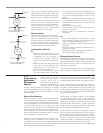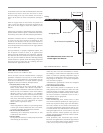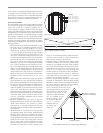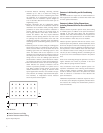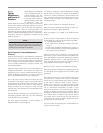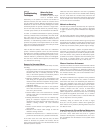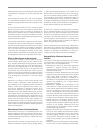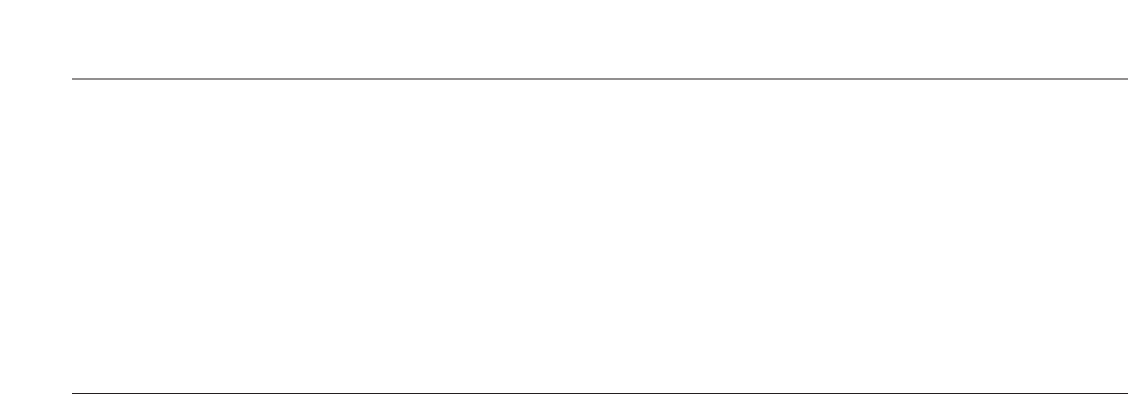
NFPA Codes and
Standards
NFPA publishes standards for
the proper application, instal-
lation, and maintenance of automatic smoke detectors. The
principal codes and standards that should be reviewed
before specifying or installing automatic smoke detectors
are listed below:
National Fire Protection Association (NFPA)
Batterymarch Park, Quincy, Massachusetts 02269-9101
NFPA publishes codes and standards concerning all phas-
es of fire protection. Among those which directly concern
automatic smoke detectors are:
NFPA 70: National Electrical Code
NFPA 72: National Fire Alarm Code
NFPA 72 covers minimum performance, location, mount-
ing, testing, and maintenance requirements of automatic
fire detectors.
NFPA 90A: Standard for the Installation of Air
Conditioning and Ventilating Systems
NFPA 92A: Smoke Control Systems in Malls, Atria, and
Large Areas
NFPA 90A and 92A provide information for the use of
smoke detectors in ducts of HVAC systems and smoke con-
trol systems.
NFPA 101: Life Safety Code
NFPA 101 specifies the requirements for smoke detection in
both new and existing buildings depending on the type of
occupancy.
Building and Fire Codes
There are three independent regional organizations which
write model building and fire codes which become law
when adopted by local and state governments. These codes
specify smoke detector requirements based on building
type and occupancy. The organizations are:
Building Officials and Code Administrators (BOCA)
4051 West Flossmoor Road, Country Club Hills, Illinois
60478-5795
BOCA’s National Building Code is generally used through-
out the northeast and midwest regions of the United States.
International Conference of Building Officials (ICBO)
5360 Workman Mill Road, Whittier, California 90601-
2298
ICBO’s Uniform Building Code is generally used through-
out the West and Southwest regions of the United States.
Southern Building Code Congress International (SBCCI)
900 Montclair Road, Birmingham, Alabama 35213-1206
SBCCI’s Standard Building Code is generally used in the
South and Southeast regions of the United States.
International Code Council, Inc. (International Building
Code/International Fire Code)
5360 Workman Mill Road, Whittier, California 90601-
2298
The organizations listed above have formed an umbrella
organization known as the International Code Council
(ICC), for the purpose of combining the codes produced by
the above three organizations into a single set of model
building and fire codes. ICC’s International Building Code
and International Fire Code were first published in 2000
and have been adopted by some states.
Testing Laboratories
Testing laboratories test smoke detectors, control panels
and other components of fire alarm systems to verify con-
formance with NFPA requirements and their own stan-
dards. Equipment that passes their tests are identified by a
label and/or listing.
Underwriters Laboratories, Inc. (UL)
333 Pfingsten Road, Northbrook, Illinois 60062
1655 Scott Boulevard, Santa Clara, California 95050
1285 Walt Whitman Road, Melville, New York 11747
12 Laboratory Drive, P.O. Box 13995, Research Triangle
Park, North Carolina
UL publishes an annual directory listing fire protection
equipment which bear the UL label. Its standards which
apply to smoke detectors are:
UL 217: Single and Multiple Station Smoke Detectors
UL 268: Smoke Detectors for Fire Protection Signaling
Systems
UL 268A: Smoke Detectors for Duct Applications
UL 864: Standard for Control Units for Fire Protective
Signaling Systems
Factory Mutual Research (FM)
1151 Boston-Providence Turnpike, P.O. Box 9102,
Norwood, Massachusetts 02062
FM publishes an annual report listing fire protection equip-
ment which bears its label.
APPLICATIONS GUIDE: SYSTEM SMOKE DETECTORS
2
The purpose of this guide is
to provide information con-
cerning the proper application of smoke detectors used in
conjunction with fire alarm systems. It outlines basic prin-
ciples that should be considered in the application of early
warning fire and smoke detection devices. Operating char-
acteristics of detectors and environmental factors, which
may aid, delay or prevent their operation, are presented.
Fire protection engineers, mechanical and electrical engi-
neers, fire service personnel, fire alarm designers and
Section 1
Standards That
Apply
Introduction
installers should find the contents both educational and
informative.
Though this information is based upon industry expertise
and many years of experience, it is intended to be used
only as a technical guide. The requirements of applicable
codes and standards, as well as directives of the Authorities
Having Jurisdiction (AHJ’s) should be followed. In partic-
ular, the most current version of NFPA 72 for installation
and testing of systems is a key element in the effectiveness
of smoke detection systems.



